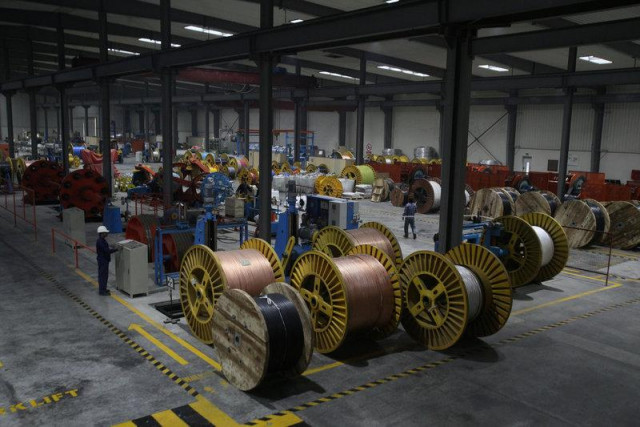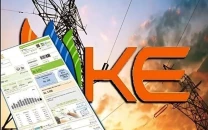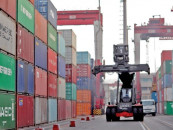Emerging copper market and opportunities
Renewable energy needs 4-6 times more copper than fossil energy

Copper market is emerging once again in the march towards green energy and electric vehicles (EVs).
Renewable energy requires four to six times more copper than fossil energy. The International Energy Agency (IEA) has projected that copper demand in the world would double in the coming two decades, ie by 2040.
Copper is new oil as the exuberant voices reverberate. Its price and demand will double.
In Pakistan, Reko Diq copper deposits are lying unutilised due to legal issues. There is a tribunal award requiring Pakistan to pay a fine of $5.6 billion.
Resource has become a curse. Fortunately, as reported in the press, background negotiations are going on to revive the project. Dissenting voices and concerns have been raised by the stakeholders.
In the following, we would like to present the context of the issues involved and the potential that lies ahead.
Current demand for copper lies around 20 million tons and supply is already short by 5-6 million tons, giving rise to higher prices.
Already in 2021, copper prices reached their highest level in history at $10,030 per ton. Copper prices had kept going down from 1965 to 2005 and then started increasing to the current level.
There is usually cyclical variation in metal prices including copper over a period of 5-10 years.
Recently, copper prices had had two dips – one in 2016 at $4,250 per ton and another in 2019 at $4,890 per ton, which were almost half the current price levels.
The current high cycle may continue for the next 10 years due to tremendous demand-pull factors, as has been mentioned earlier. One of the issues in the Reko Diq dispute has been that the investor should also install the intermediate facilities of smelter and refinery to enable local processing by the downstream industry.
Value addition and job creation are the cherished objectives of the host government. Concentrates can only be exported out and cannot be used by the local industry. Another doubt among local stakeholders, which has been recently spelled out, is that local refining would enable closer monitoring and regulation of copper and gold percentages which at concentrate stage remains doubtful.
Investor companies have their own objectives, interests, commitments and linkages for concentrate processing. Smelting and refining has traditionally been concentrated in larger and advanced economies like Japan, South Korea, China, India, European states and the US.
Also, the smelter’s economic size is often larger (350,000-500,000 tons per year), which is bigger than the smaller mine size like Reko Diq of 200,000 tons.
Often investment requirements in the downstream industry are much more than mining investments, which may not be on the mine site and may be done by other parties.
Incidentally, Reko Diq mine size is lower than the 20th smallest mine (Sentinel) with a capacity of 260,000 tons. The largest is Escondido with a capacity of 1.4 million tons.
Copper was discovered in the 1960s in Pakistan and Resource Development Corporation (RDC) was established to develop the resource in the 1970s.
Later, a small project of Saindak was established under Chinese assistance which the government of Pakistan tried to run but had to be closed down due to financial losses.
The project was later taken over by Chinese company MCC, which continues to do so while Saindak deposit is closer to exhaustion.
A late comer
China is the largest consumer and producer of finished copper in the world. It is also the largest market of copper. China imported copper ore and products to the tune of $48.5 billion in 2019. China could have been a natural partner for Reko Diq and should have been involved in the project before getting embroiled in a dispute. Perhaps, CPEC was a late comer for Reko Diq, otherwise, it would have been an ideal framework. Now with the tribunal’s fine, our hands are tied with the litigant party. Chinese went to Afghanistan to develop Aynak deposits, which could not be developed due to the poor law and order situation.
China, however, got hold of competing copper deposits of 240 million tons nearby, 40 km from Kabul. Its copper grade is much higher at 2.3%, about five times higher than Reko Diq.
Jiangxi Copper and MMC prepared a project to produce 330,000 tons per year of copper concentrate and export it to China. Capital investment of $3.3 billion has been envisaged. Project is in limbo due to instability in Afghanistan.
China had got Saindak much earlier. Saindak is a small project, which produced blister copper of 13,222 tons in 2016-17 and exported 12,310 tons with export value of $102 million.
By comparison, Reko Diq is 15-16 times larger project (220,000 tons of copper per year), although its production is limited to concentrate. Extrapolating Saindak data to Reko Diq, the latter’s output and export should be worth $1.6 billion at 2016-17 prices.
Iran’s copper mine
Iran started developing its copper mine at Sarchashmeh (Kerman province) around the same time as RDC was formed in the 1970s. Iran managed to continue the project. Today, a complete integrated project runs with copper cathode production exceeding 200,000 tons per year. Investment has been recouped several times.
Iran’s Sarchashmeh deposit is richer than Reko Diq in terms of copper percentage of 0.70% as compared to Reko Diq’s 0.41%.
Reko Diq, probably, has arrived at the right time and still continues to be in the right time frame due to the emergence of EVs and renewable energy like solar.
Iran’s good experience and our bad experience tell us that one should not be overzealous in terms of value-added and downstream industry, jeopardising the project itself.
Ultimately, investment comes in with time when politics and economics of the resource permit. There are three streams of revenue which accrue to the host government in mining projects including copper.
Under this scheme of things, the investor and host government takeaway from the copper project almost remains at 50-50%. It is a separate matter that either due to market circumstances or corrupt practices and account manipulation, the host government revenue may be eroded.
This creates political discontentment and disputes, rendering host countries poor as many countries are in Africa.
It is time for the parties in Reko Diq to develop a framework for restarting the project. We have earlier discussed the need for improving access to mineral areas and improve the internal climate at local and provincial levels.
On the part of the mining company, the enticement of recouping the fine is great but greater opportunity lies in utilising the copper and gold deposits of Reko Diq for the mutual benefit of the parties involved. Market of copper is expanding and prices rising. Worldwide fast-track utilisation is a priority to maximise the present value of earnings. Project parameters can be changed to increase the throughput and revenue.
Company benefits as well as the host government; the latter can utilise the income and foreign exchange for the betterment of its people and the economy. It is not a zero-sum game. It is value creation.
The writer is former member energy of the Planning Commission and author of several books on the energy sector
Published in The Express Tribune, January 24th, 2022.
Like Business on Facebook, follow @TribuneBiz on Twitter to stay informed and join in the conversation.



















COMMENTS
Comments are moderated and generally will be posted if they are on-topic and not abusive.
For more information, please see our Comments FAQ